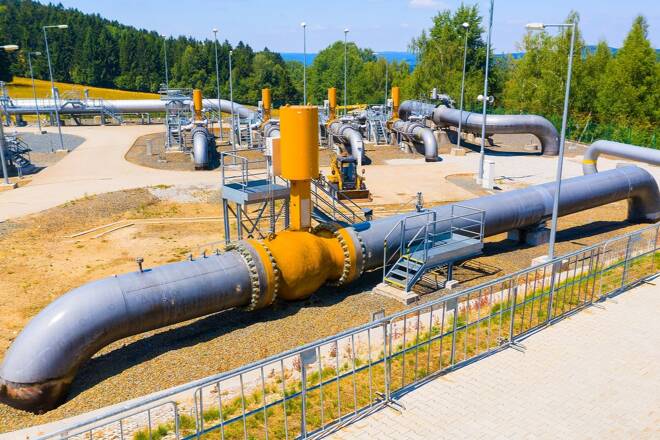Advertisement
Advertisement
Natural Gas Price Fundamental Daily Forecast – Pressured by Rail Strike Settlement Ahead of EIA Report
By:
An EIA injection near 70 Bcf would leave stocks more than 11% below the five-year average and could reverse the early session weakness.
Natural gas futures are trading sharply lower on Thursday, shortly before the release of the government’s weekly storage report after President Joe Biden announced a tentative railway labor deal to avert a national rail strike that threatened to shut a major segment of the U.S. transportation network.
The agreement would improve rail workers pay, working conditions, and give them “peace of mind around their health care costs,” Biden said in a statement.
Negotiators from railroad carriers and unions met in Labor Secretary Marty Walsh’s office Wednesday as the sides tried to negotiate a deal ahead of Friday’s strike deadline.
At 10:37 GMT, October natural gas futures are trading $8.696, down $0.418 or -4.59%. On Wednesday, the United States Natural Gas Fund ETF (UNG) settled at $31.46, up $2.33 or +8.00%.
Traders Erasing Strike Premium
U.S. natural gas futures jumped about 10% to nearly a two-week high on Wednesday on forecasts for higher demand over the next two weeks, soaring global gas prices and worries that a possible railroad strike could threaten coal supplies to power plants.
A rail strike could’ve forced generators to burn more gas to produce electricity. Coal fuels about 20% of U.S. power generation. About two-thirds of the nation’s coal-fired power plants receive their coal by rail.
When coal or any other fuel is not available for power generation, energy firms burn more gas to produce power.
Due to the announced settlement, today’s early price action indicates traders are already reducing the strike premium.
Other Bearish Factors Could Be Weighing on Prices
Before today’s early retreat, natural gas prices had risen for five-consecutive sessions including yesterday’s rally that produced the biggest one-day percentage gain since July 20.
Besides the erasure of the strike premium, sellers could also be responding to reports that show output was on track to reach a monthly record. Additionally, an outage is expected at the Cove Point liquefied natural gas (LNG) plant in Maryland in October that should make more gas available for storage.
The ongoing outage at the Freeport LNG export plant in Texas is also a bearish factor since it is leaving more gas in the United States for utilities to inject into stockpiles next winter. Freeport, the second-biggest U.S. LNG export plant, was consuming about 2 billion cubic feet (bcfd) of gas before it shut on June 8. According to company officials, the facility is expected to return at least partial service in early to mid-November.
US Energy Information Administration Weekly Storage Report
The EIA is scheduled to release its storage data for the week-ended Sept. 9 at 14:30 GMT.
According to Natural Gas Intelligence (NGI), a Bloomberg survey found a median prediction for a 71 Bcf increase. Injection predictions ranged from 62 Bcf to 80 Bcf. Reuters’ poll found estimates spanning builds of 64 Bcf to 78 Bcf, with a median estimate of 72 Bcf. The Wall Street Journal’s survey landed at an average injection expectation of 75 Bcf. Estimates ranged from 70 Bcf to 78 Bcf.
The actual build in the comparable week of 2021 was 78 Bcf, and the five-year average was 82 Bcf, according to the EIA.
Short-Term Forecast
The short-term charts indicate October natural gas may become rangebound between $8.319 and $9.133.
A break under $9.133 could trigger a steep break into the major support at $7.669 to $7.121. Since the long-term fundamentals are bullish, buyers could return on a pullback into this support zone.
On the upside, a breakout over $9.133 could trigger an acceleration to the upside with $9.987 the next potential upside target.
Fundamentally, the long-term picture is bullish due to the ongoing supply deficit. According to NGI, “Should (the) EIA print an injection in the low-to-mid-70s, it would leave stocks more than 11% below the five-year average. With elevated demand across seasons, the market has maintained an inventory deficit throughout 2022.”
For a look at all of today’s economic events, check out our economic calendar.
About the Author
James Hyerczykauthor
James Hyerczyk is a U.S. based seasoned technical analyst and educator with over 40 years of experience in market analysis and trading, specializing in chart patterns and price movement. He is the author of two books on technical analysis and has a background in both futures and stock markets.
Advertisement
